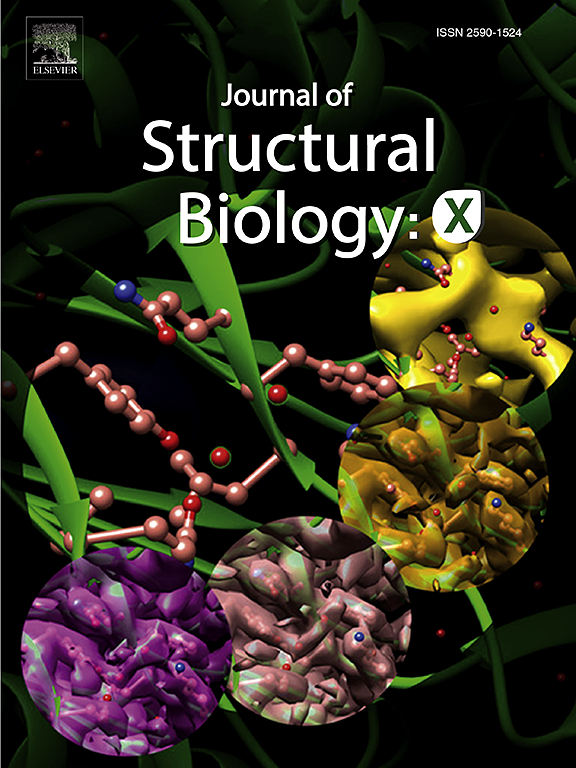Automatic detection of alignment errors in cryo-electron tomography
IF 2.7
3区 生物学
Q3 BIOCHEMISTRY & MOLECULAR BIOLOGY
引用次数: 0
Abstract
Cryo-electron tomography is an imaging technique that allows the study of the three-dimensional structure of a wide range of biological samples, from entire cellular environments to purified specimens. This technique collects a series of images from different views of the specimen by tilting the sample stage in the microscope. Subsequently, this information is combined into a three-dimensional reconstruction. To obtain reliable representations of the specimen of study, it is mandatory to define the acquisition geometry accurately. This is achieved by aligning all tilt images to a standard reference scheme. Errors in this step introduce artifacts into the final reconstructed tomograms, leading to loss of resolution and making them unsuitable for detailed sample analysis. This publication presents algorithms for automatically assessing the alignment quality of the tilt series and their classification based on the residual errors provided by the alignment algorithms. If no alignment information is available, a set of algorithms for calculating the residual vectors focused on fiducial markers is also presented. This software is accessible as part of the Xmipp software package and the Scipion framework.

低温电子断层扫描中对准误差的自动检测。
低温电子断层扫描是一种成像技术,允许研究广泛的生物样品的三维结构,从整个细胞环境纯化标本。该技术通过倾斜显微镜中的样品台,从标本的不同角度收集一系列图像。随后,这些信息被组合成一个三维重建。为了获得研究样本的可靠表示,必须准确地定义采集几何形状。这是通过将所有倾斜图像对齐到标准参考方案来实现的。这一步骤中的错误会在最终重建的层析图中引入伪影,导致分辨率下降,使其不适合进行详细的样品分析。本出版物提出了自动评估倾斜序列对齐质量的算法,并基于对齐算法提供的残差对其进行分类。在没有对准信息的情况下,提出了一套以基准标记为中心的残差矢量计算算法。该软件可以作为Xmipp软件包和sciion框架的一部分进行访问。
本文章由计算机程序翻译,如有差异,请以英文原文为准。
求助全文
约1分钟内获得全文
求助全文
来源期刊

Journal of structural biology
生物-生化与分子生物学
CiteScore
6.30
自引率
3.30%
发文量
88
审稿时长
65 days
期刊介绍:
Journal of Structural Biology (JSB) has an open access mirror journal, the Journal of Structural Biology: X (JSBX), sharing the same aims and scope, editorial team, submission system and rigorous peer review. Since both journals share the same editorial system, you may submit your manuscript via either journal homepage. You will be prompted during submission (and revision) to choose in which to publish your article. The editors and reviewers are not aware of the choice you made until the article has been published online. JSB and JSBX publish papers dealing with the structural analysis of living material at every level of organization by all methods that lead to an understanding of biological function in terms of molecular and supermolecular structure.
Techniques covered include:
• Light microscopy including confocal microscopy
• All types of electron microscopy
• X-ray diffraction
• Nuclear magnetic resonance
• Scanning force microscopy, scanning probe microscopy, and tunneling microscopy
• Digital image processing
• Computational insights into structure
 求助内容:
求助内容: 应助结果提醒方式:
应助结果提醒方式:


